Ida and Dactyl
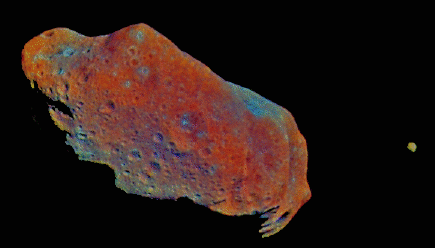
Ida and Dactyl (false color)
Clark R. Chapman
Invited Review Article for Meteoritics & Planetary Science
9 May 1996, Revised 20 August 1996
Abstract (Chapman, 1996):
New observations of the S-type asteroids Gaspra and, especially, Ida by the
Galileo spacecraft demonstrate that a "space weathering" process operates, which
modifies the reflectance spectra of fresh material to be redder, straighter, and have
shallower absorption bands. The weathering process appears similar to, but less
potent than, that observed on the Moon. It operates in the sense that would tend to
convert spectra of ordinary chondrites to have the spectral traits of S-type asteroids.
These results appear to resolve the major obstacles of the long standing "S-type
conundrum" about the provenance of ordinary chondrite meteorites. A wide body of
recent research, reviewed here, builds on previous meteoritical evidence to support a
new, developing consensus that the larger S-type asteroids are a diverse assortment of
silicaceous assemblages, which includes the OC parent bodies. Recent fairly
realistic laboratory simulations of space weathering processes have changed OC
spectra to resemble S-type spectra. J. F. Bell's highly regarded earlier paradigm that
OC parent bodies would be found only among sub-10 km main-belt asteroids has been
tested by an extensive observational survey by R. Binzel and his proteges; the result is
that no small, main-belt analog for the OC's has been found, not even the somewhat
OC-like object Boznemcova.
This article reviews the history of the S-type conundrum, which set the stage for
Galileo's historic fly-bys. I then review the findings about Gaspra and Ida, including
results about their geology, their geophysical structure and probable origins, and about
Ida's small moonlet, Dactyl. Density constraints on Ida set by Dactyl's orbit rule out
(for Ida, at least) the classic view of S-types as metallic, stripped cores of differentiat-
ed precursor asteroids. New analysis of the Galileo spectral images of Ida is
presented that provides strong evidence that space weathering occurs on Ida and that
Ida, and the Koronis family asteroids in general, are plausibly OC-like in composition.
After reviewing 1990's developments on the S-type conundrum, I advocate a new
perspective that the ordinary chondrite parent bodies are among the S-type asteroids,
a diverse grouping that also contains other silicaceous and silicate/metal assemblages,
presumably including various stony-irons and primitive achondrites represented in
meteorite collections; Gaspra may be such a metal-rich assemblage.
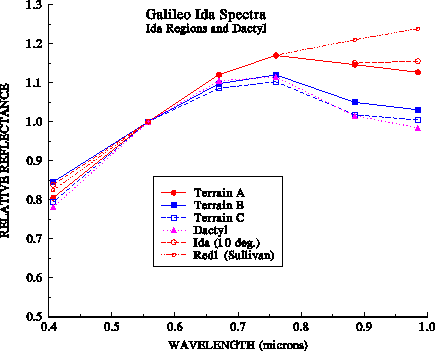
Fig. 4 from Chapman (1996). Spectral differences between different regions on Ida
and Dactyl.
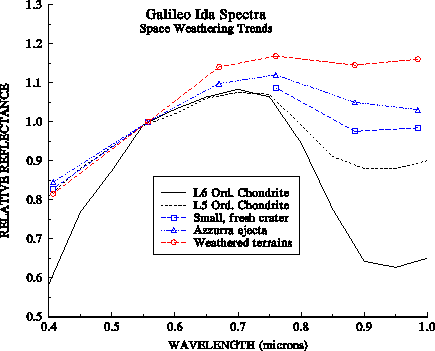
Fig. 6 from Chapman (1996). Weathering trends on Ida with possible OC pure
end-members. Younger features have deeper absorption bands. The weathered
terrains
are reddest and have weaker bands.
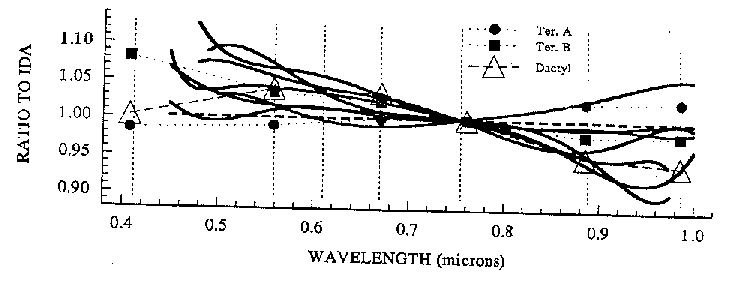
Fig. 7 from Chapman (1996). Spectra of Koronis family members (from Binzel et
al.) ratioed to Ida shows minor differences; spectrum of Dactyl shows more
curvature ("BEND") than any Koronis member measured so far.
Clark R. Chapman, Eileen V. Ryan, William J. Merline,
Gerhard Neukum, Roland Wagner,
Peter C. Thomas, Joseph Veverka,
and Robert A. Sullivan
Abstract (Chapman et al., 1996, Icarus 120,
77-86):
Craters on Ida have a size distribution consistent with equilibrium under conditions
of crater saturation over the range 100 m to 1 km diameter. The density of craters is
high and they follow a -3 differential slope. The craters show a full spectrum of
degradational morphologies at both large and small sizes. Craters >2 km diameter
(and especially those >5 km) are more prevalent on one part of Ida; a sub-
equilibrium, production population is seen on the other part, which rises steeply and
reaches equilibrium for diameters <1 km, consistent with the production population
found on Gaspra. We calculate that the visible craters should have contributed
appreciable regolith, about 150 m average depth. If Gaspra and Ida have similar
strengths and are subject to impact by the same projectile population, then Ida is
about 10 times older than Gaspra, roughly 2 b.y. old. Ida could be younger, however,
if it underwent early heavy bombardment in the aftermath of the break-up of the
Koronis precursor body.
Various presentations of crater diameter-frequency relations (both incremental and
cumulative), including comparisons with Gaspra.
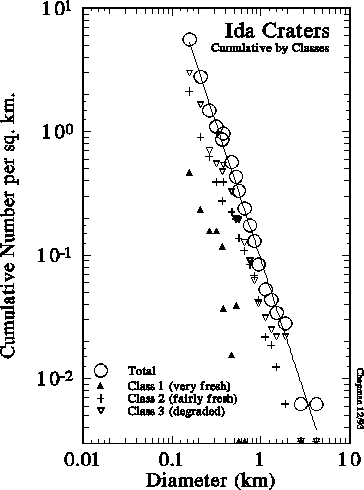
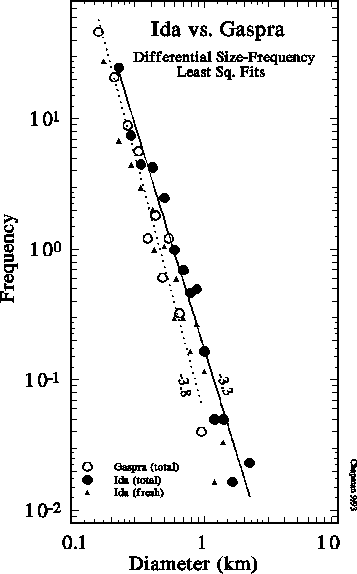
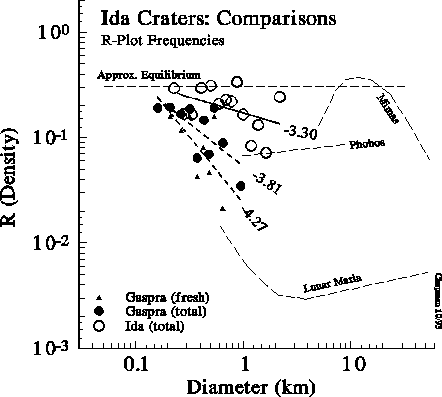
Investigation of Dactyl's Orbit

 Return to Clark R. Chapman's
Home Page
Return to Clark R. Chapman's
Home Page
Return
to SwRI Boulder Office
(GAP) Homepage.
SwRI Homepage
Homepage





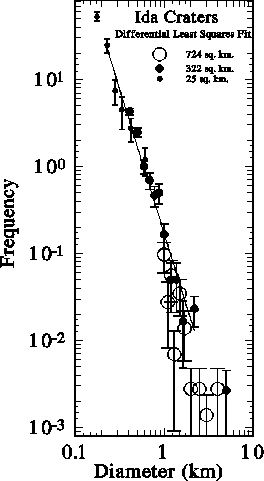
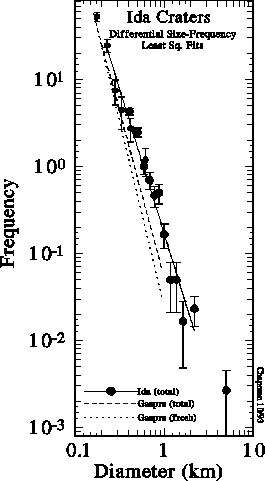



 Clark
R. Chapman's Publications.
Clark
R. Chapman's Publications.
 Homepage
Homepage